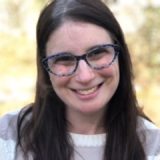In the fall of 2013, my husband, Steve, and I were blessed with the purchase of our first home. Steve had recently begun teaching at Temple Beth Shalom Children’s Center, where colleagues assisted us in finding a home in an already tight Needham market. We were elated.
After struggling a bit to conceive due to prior health conditions, including a diagnosis of endometriosis, that summer prior we had begun to attempt a new approach to conception with assisted reproductive technologies (ART). We bravely took that next step, and while the first month of trying was not successful, our second was, and I finally felt I was beginning to fulfill my potential of becoming a mom.
It was a Thursday when we closed on our house in the section of Birds Hill in Needham. We took a selfie at the front door, posted on Facebook and met our neighbors, who I happened to go to high school with in Newton decades earlier. They had just had their second child. Finally, after struggling, I was beginning to feel like my life fit into the suburban dream.
However, six weeks after taking that big step on my journey, my dreams were shattered.
That Friday, September 13 (of course it had to be Friday the 13th…), on erev (eve of) Yom Kippur, we went for our first ultrasound. The technician did not seem at ease with what she saw on the screen and said she would get the doctor. The follow-up conversations throughout the next week were piercing: “We don’t see a heartbeat,” “Let’s try again in five days,” “Here are the odds of it going one way or another.” Certain other conversations of that week were softer and showed the true essence of the goodness in others: Friends called to send love and family provided Shabbat meals. My community helped me build a space to mourn. And yet, even then, somehow, I just felt ashamed.
On judgement day, I was afraid to be judged and had lost hope. Why am I not yet able to achieve what seems to be a natural human capacity to bring new life into this world?
When one miscarries, we as a community often miss the opportunity to carry those struggling. As a Jewish community, we know the power of human connection to heal and yet as individuals dealing with pregnancy loss, our immediate inclination is to retreat. When the loss is not visible, what can we as a community do when it’s so easy for someone to hide? We know when we have a loss such as the death of a parent, we need one another during shiva to tell stories to grieve. But what happens when the loss is coupled with inexplicable shame such that we isolate ourselves? What happens when the loss is not only the loss of a life but the loss of hope?
The weeks that followed spiraled me into a depression as I attempted to manage the pain of losing a child and losing the dreams I had just spent years building in my head—our children walking to Mitchell School down the street, sending them to TBS along with my husband, having grandparents nearby. And so began a dark time.
-
During that time, I was getting coffee regularly with someone I had met through the Jewish community who was also struggling to conceive. She helped me rebuild one day at a time. Sharing our stories reminded me that I was human and whole, even if I felt broken. I was in good company with other incredible women whose journey to motherhood was not all smooth.
As I rebuilt and became blessed during my first round of IVF (in vitro fertilization) to conceive my daughters, Zoe and Isabella, I began to recognize the power of community and the void that exists for those whose family-building trajectory includes bumps on the road. We all have bumps in the road of one kind or another, fertility-related or otherwise. The key is to find others with a common thread and weave together those threads to build a web that can catch you when you fall, and that will even become a springboard for when things are looking brighter; people with whom you can one day celebrate the beauty of life once again.
In our community, there are those of us who struggled to conceive, who were devastated by pregnancy loss, premature labor and NICU trauma, and who struggled through the challenging stages of the adoption process or working to find a surrogate. The range of specifics to the stories are vast, but the core feelings of loss, grief and shame led us all to isolate. For others of us, the road to parenthood was easy; however, now we may be watching our own children go through this anguish and wish there were something we could do.
Fertility journeys isolate. The Jewish community should not.
I am so proud to share that as co-founder of Uprooted: A Jewish Response to Fertility Journeys, I have had the great honor to build a program for our community to carry those navigating this journey. Uprooted is launching The ROOTS groups online. The ROOTS groups comprise a handful of couples on family-building journeys who want to connect with others and with their Judaism. There is a range of groups for those experiencing different isolating journeys: miscarriage, primary infertility and secondary infertility. Although it may seem daunting to come out of the darkness and enter into the bright light by meeting others, it’s one of the most nourishing and important ways to provide self-care.
The human connection heals.
If you know of someone who may appreciate these small group connections or would benefit from a one-on-one mentorship, please share this article with them so they may find the links in the paragraph above to register for these free groups. Feel free to also be in touch with me directly at becca@weareuprooted.org. If you have a story to tell of your own journey in the past, please share so that we can build a cadre of stories and combat the stigma that goes along with family-building challenges.
Let’s carry each other and not miss any opportunity to bring healing to one another.
Never miss the best stories and events for families, children and teens! Get JewishBoston Plus Kids.
This post has been contributed by a third party. The opinions, facts and any media content are presented solely by the author, and JewishBoston assumes no responsibility for them. Want to add your voice to the conversation? Publish your own post here.
MORE
Becca Shimshak is the co-founder of Uprooted: A Jewish Response to Fertility Journeys and is the director of the Greater Boston Jewish Coalition for Literacy at the Jewish Community Relations Council of Greater Boston.






